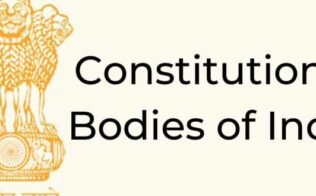Background
For the period 2014 to 2019, SBM or Swachh Bharat Mission was a national effort in India aimed at cleaning up the streets, roads, and infrastructure of the country’s cities and towns, urban and rural regions. A major goal of Swachh Bharat is to eliminate open defecation with the building of home and society toilets and to develop an accountable process for monitoring the use of these facilities. “Rural” Swachh Bharat Abhiyan (under the Ministry of Drinking Water and Sanitation) and Swachh Bharat Mission Urban 2.0 (under the Ministry of Housing and Urban Affairs. These are two of the country’s two major sanitation programs.
Launched on October 2, 2014, the Swachh Bharat Mission-Urban (SBM-U) intended to eliminate open defecation in urban India and achieve 100 percent scientific approaches of municipal solid waste throughout the country’s 4,041 statutory cities and towns. Similarly, the second phase of SBM, Urban 2.0, was launched in 2021 for five years.
[ias_current_affairs_cta]
Introduction to Urban 2.0 SBM
The Prime Minister unveiled Swachh Bharat Mission Urban 2.0 on October 1, 2021. “Cleanliness and Solid Waste Management” will focus on a new mission to attain “Garbage Free” Urban India. In addition, cities with fewer than one lakh populations have implemented a full liquid waste management system to store and filter wastewater.
More than 3.5 lakh toilets will be built in metropolitan areas over the next five years to accommodate the influx of workers from urbanised regions. They would have full access to sanitation facilities as a result of this.
Read More: Basic Structure Doctrine of Indian Constitution
Features of Swachh Bharat Mission Urban 2.0
Swachh Bharat 2.0 aims to expand the scope of the Swachh Bharat Mission. It aims to include safe containment, transport, waste disposal, and transportation of faecal sludge and septage from toilets, as well as septage collection.
The government aims to ensure that all wastewater is adequately treated before released into the environment and prioritizes maximum reuse.
It also aims to reduce single-use plastics and air pollution by properly managing trash from building and demolition operations and bioremediation of all residual disposal sites, a major source of pollution.
It would be implemented from 2021 to 2026, with an Rs.1.41 lakh crore budget over five years.
Objectives
The main objective of Swachh Bharat Mission Urban 2.0 is hoped that all cities would be “Garbage Free” and that grey and black water management will be implemented in all cities apart from those covered by AMRUT.
All urban local bodies will be designated as ODF+, and others with a demographic of less than 1 lakh will be designated as ODF++, therefore attaining the goal of safe sanitation in urban areas.
Reducing, reusing, and recycling (the 3Rs) will be the centre of this mission. Scientific treatment of all sorts of local hazardous waste and cleanup of residual open dumps will also be part of the mission.
What should be the Goal of the SBM -U 2.0?
The existing approach of awarding massive contracts to major corporations instead of decentralising community-level activities, for example, has made the segregation of waste in the environment impossible. SBM-U 2.0 can’t keep up with the rising garbage stream in a booming economy if it doesn’t expand its operations and build new material recovery facilities.
While the outstanding claim of exceeding expectations for home, communal, and toilet facilities thus far overlooks the fact that many of them are useless, and in public locations, they are neglected. Communities should be encouraged to take responsibility for the trash and sanitation system by state and local governments.
Even though presently constituted, urban India has a long way to go before it achieves Open Defecation Free plus (ODF+) designation, which needs no recorded cases of open defecation and the proper operation of all public toilets.
What Non-Compliance Measures Can be Taken?
In addition, the national government should establish a national framework to encourage and supervise state-level implementation. Punitive actions must be used in circumstances of non-compliance. The Ministry of Environment, Forest and Climate Change (MoEF&CC) must promote pollution state control bodies and urban agencies for improved compliance and enforcement because segregation levels are too low all across the country. In addition, the government should set up a national framework to encourage and supervise state-level implementation. Punitive actions could also be used in incidents of non-compliance.
Small Behavioural Changes Can Also Make A Big Difference
Waste management has to be on changing people’s habits too. Urban municipal governments must work with civic organizations, neighborhood self-help groups and engage residents to ensure segregation, trash minimization, and composting at the source.
Municipalities should shift their emphasis to waste extraction because the generators must dispose of their waste. In addition, bulk producers must have waste management and sorting technologies at the source. At the very least, minimalism should be practiced. Involving the city’s informal sector in establishing new procedures might also be beneficial.





